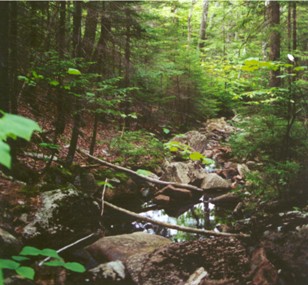 |
 | |
  | |
|
|
|
|
Acadia National Park
Forests
|
|
|
|
|
|
 |
 |
| Ken Johnson | |
 |
Acadia National Park is blanketed with forests and woodlands that are situated in the transition zone of two ecoregions: the northern boreal forest and the eastern deciduous forest. Much of the park is covered by spruce-fir forests, which is representative of the boreal influence; however, Acadia also contains stands of oak, maple, beech, and other hardwoods more typical of most of New England. There are also several unique, isolated forest communities, such as pitch pine and scrub oak woodlands, that are found in the park at their northeastern range limit. Similarly, jack pine reaches the southern limit of its range in Acadia.
A catastrophic fire in 1947 that burned a large portion of the eastern side of Mount Desert Island was the most recent major fire, but there is evidence of previous burns found in trees and soils in much of the park. The 1947 fire facilitated the replacement of conifers with deciduous species such as birch and poplar. Therefore, there are currently large areas of 50-year-old woodlands, as well as other areas that have had a longer time to develop since being disturbed.
|
|  |  |

|
 |
|
|
|
|
|
 |
|
Did You Know?
The historic carriage road system at Acadia National Park features 17 stone-faced bridges spanning streams, waterfalls, cliffs, and roads. The design of each bridge, such as Cobblestone Bridge, is unique.
|
|
|
|
Last Updated: December 27, 2007 at 13:57 EST |






